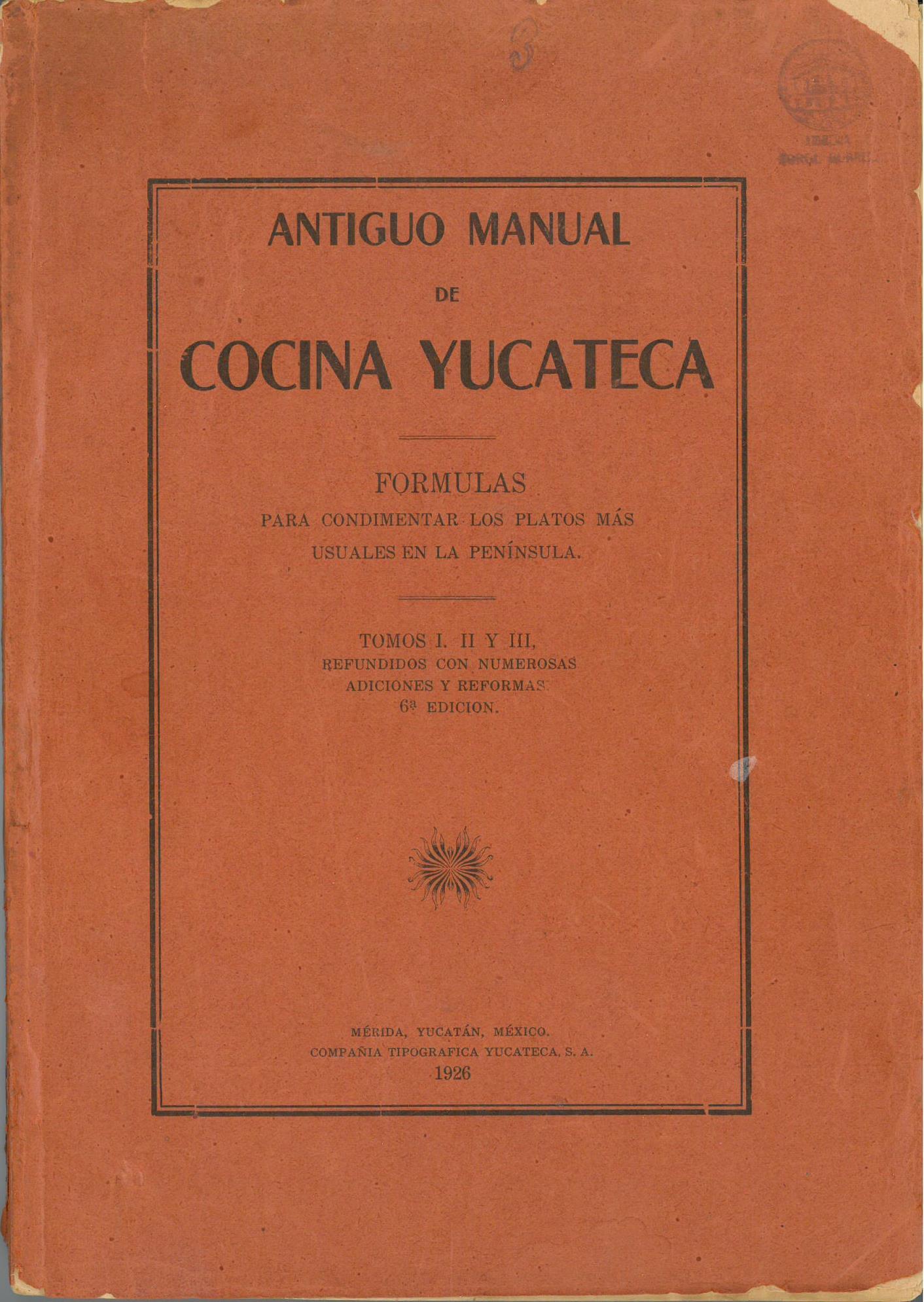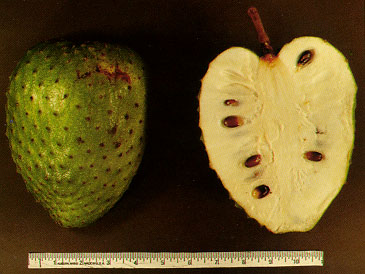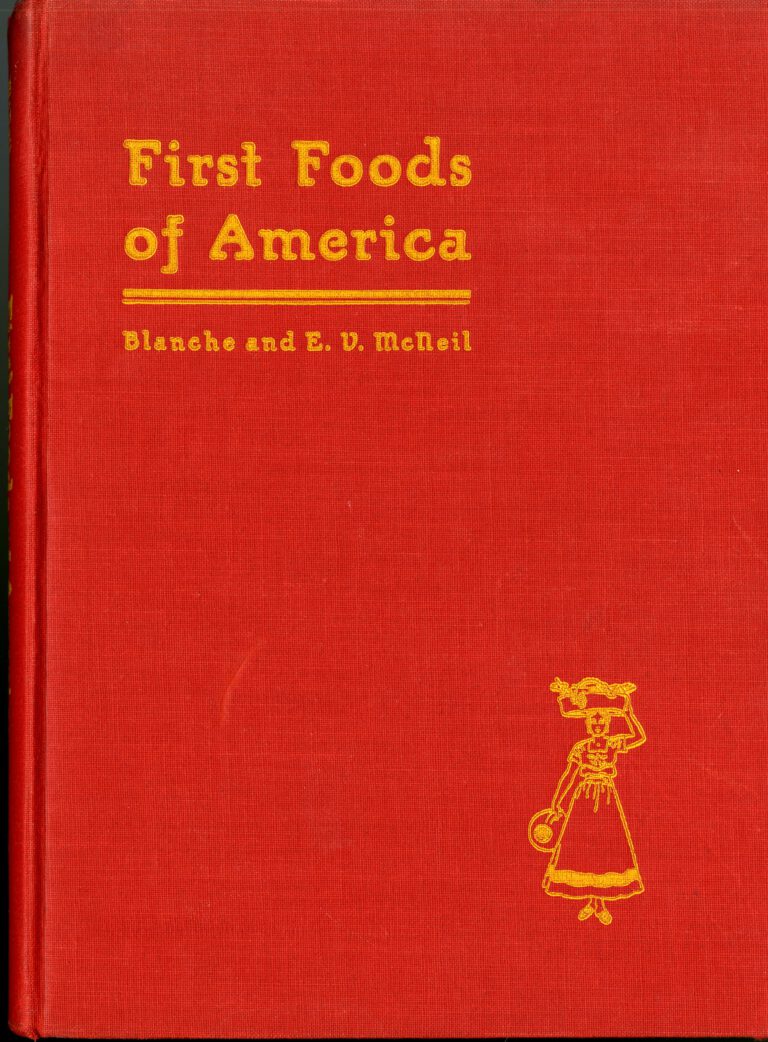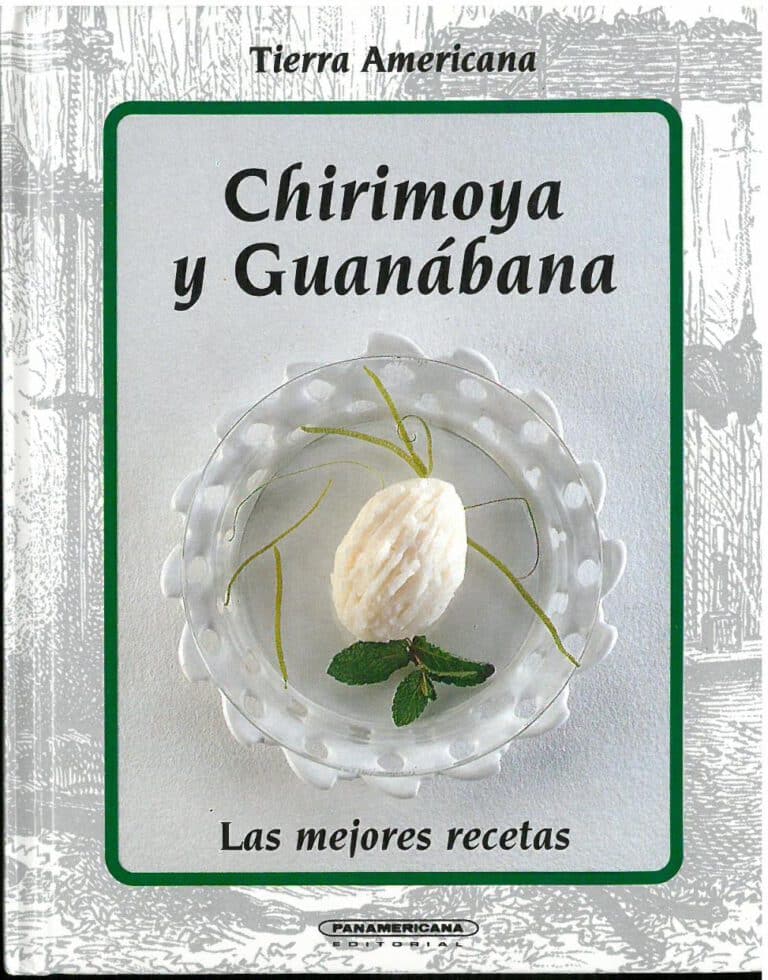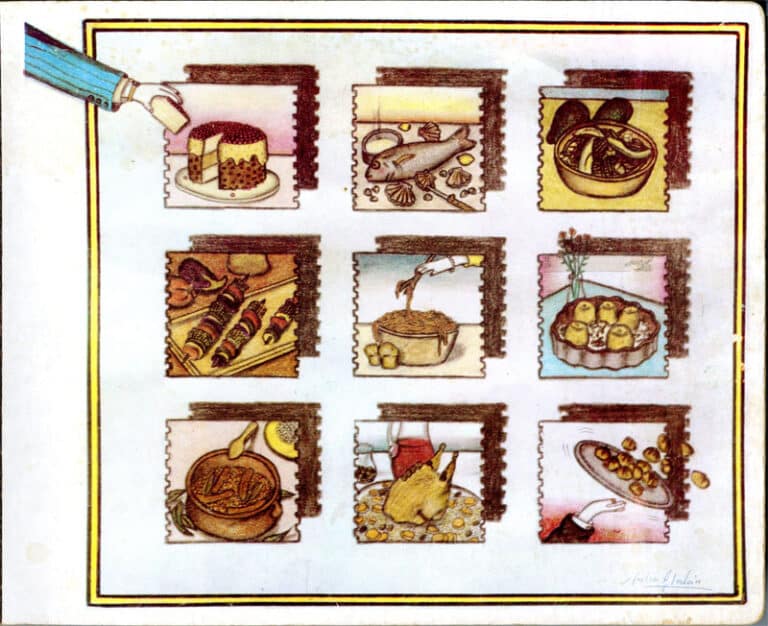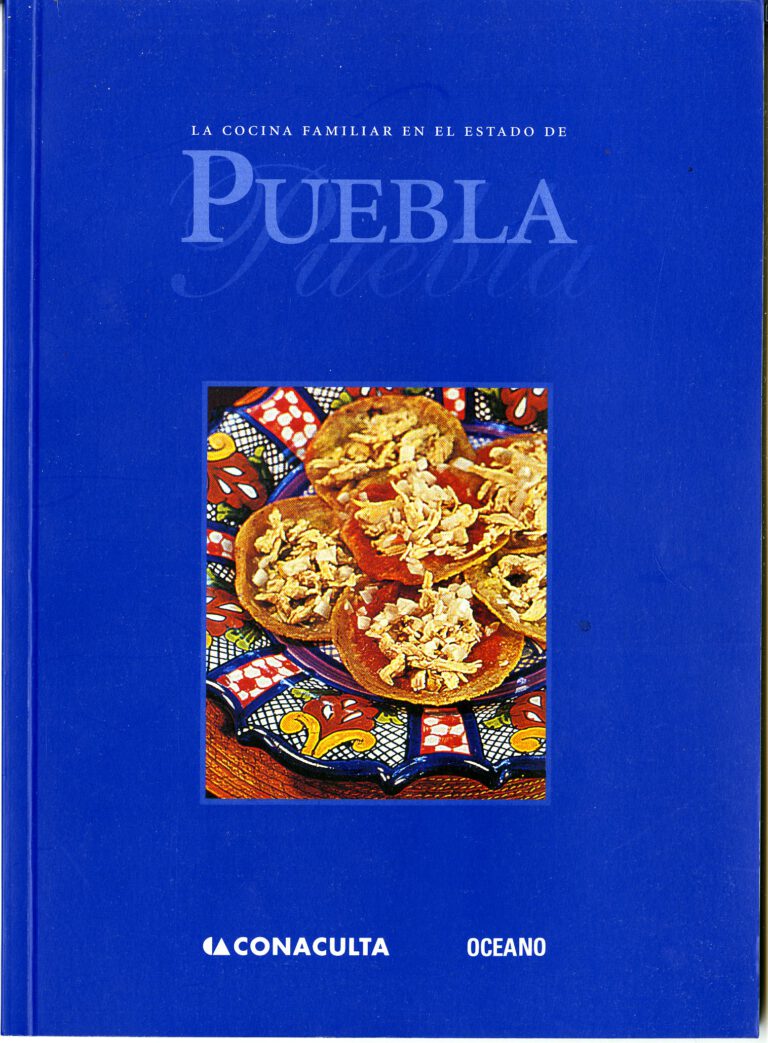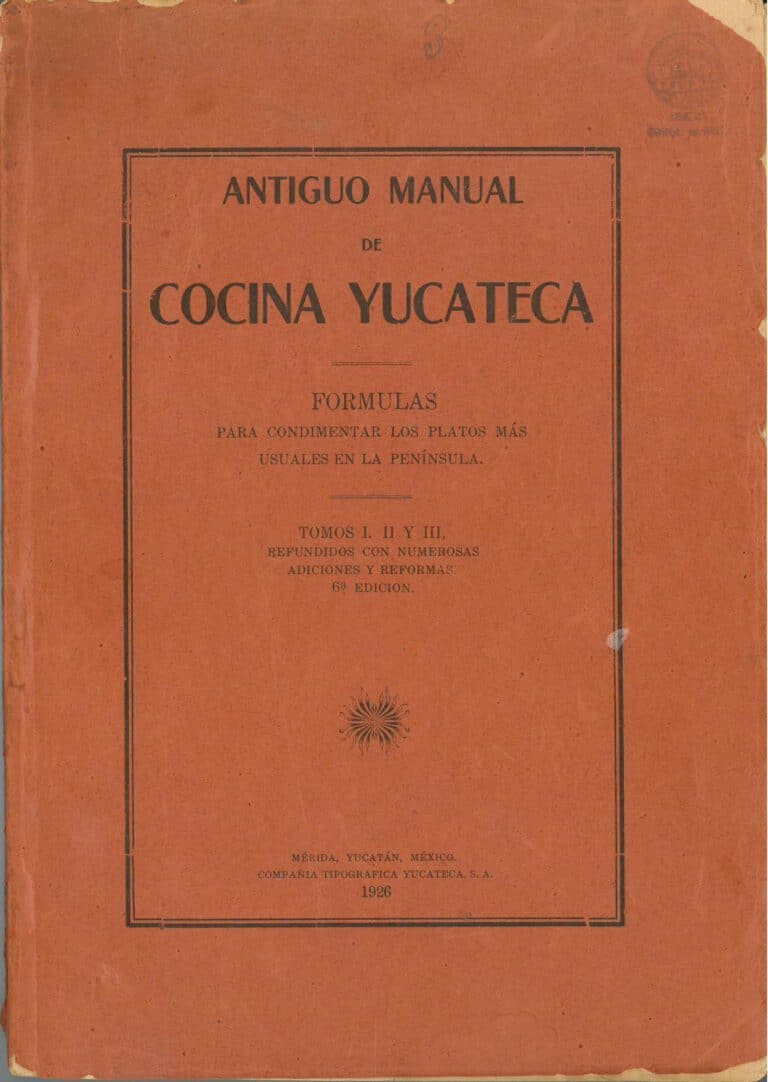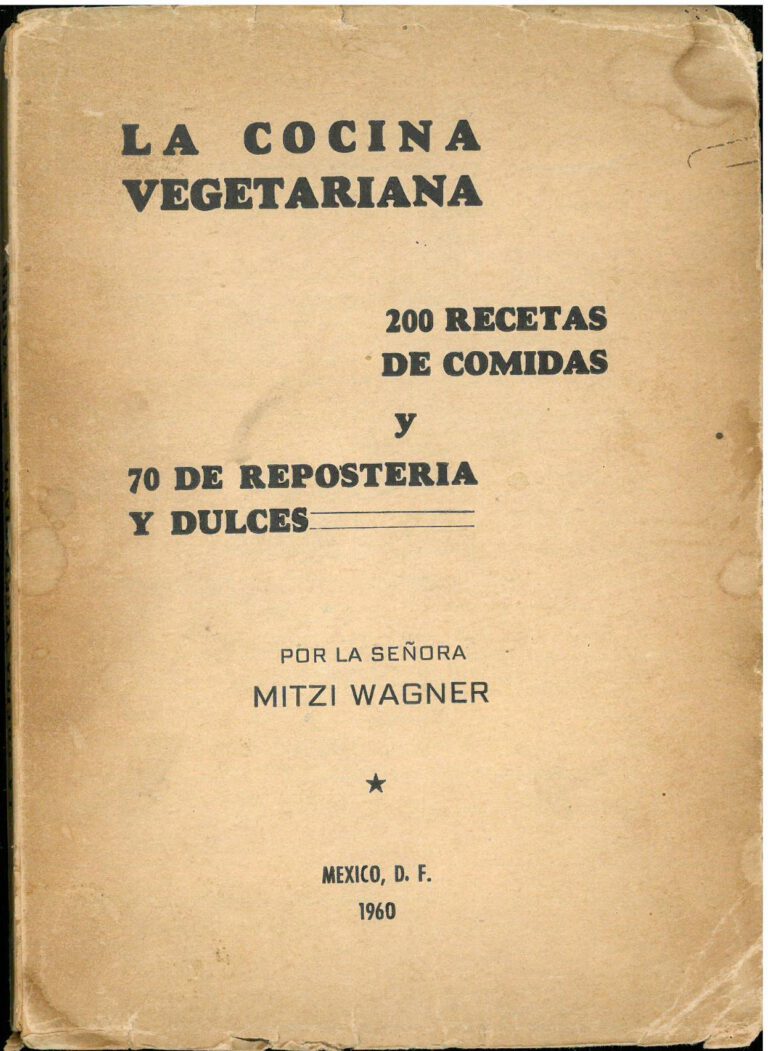Merengue de Guanábana 1926 (Soursop Meringue)
Rendón de García, Hortensia. Antiguo Manual de Cocina Yucateca: Fórmulas paraa Condimentaar los Platos Más Usuales en la Península. Tomos I, II, y III, Refundidos con Numerosas Adiciones y Reformas. Mérida, Yucatán, México: Compañía Tipográfica Yucateca, 1926. [TX716.M4 A58 1926]
Antiguo Manual de Cocina Yucateca primarily focuses on main dishes, soups, and vegetables, but it also includes one chapter of desserts. A couple of these make use of an unusual tropical fruit called guanábana or soursop.
The soursop is an evergreen tree that grows 25-30 feet in height in parts of Mexico, the Caribbean, Central and South America, and Asia. Each tree bears 12-24 large green-skinned ovoid fruit with fleshy spines. Fruits may grow up to 10-15 pounds! The white flesh is fibrous, but juicy and contains numerous black seeds [1].
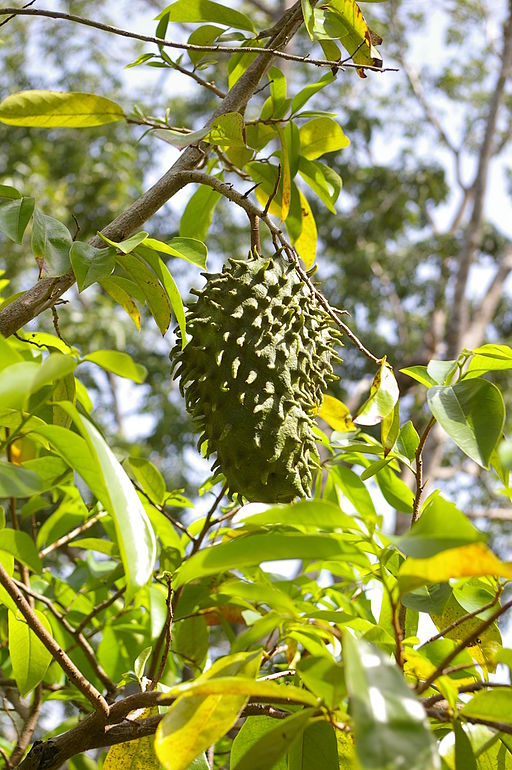
Although grown widely in southern and southeastern Mexico, and locally abundantly available from October to December, soursops are difficult to transport without spoilage. Nonetheless, the soursop’s juicy flesh and tart flavor makes it a popular choice for eating as fresh fruit or for use in aguas frescas and sorbet.[2] Seeded soursop has been canned in Mexico for some years and may occasionally be available in the U.S. [3]
Juice can be made from fresh soursop by seeding the pulp and pressing it through a colander, sieve, or cheesecloth. If an electric blender is used in this process, it is very important to remove all seeds, as they are somewhat toxic and should not be accidentally ground up in the juice. [4]
Although toxic to consume, the seeds do have other uses: pulverized seeds are effective pesticides against head lice, southern army words and pea aphids. Additionally, soursop leaves can be used in a preparation that will kill both head lice and bedbugs.[5]
However, for a pleasant gastronomic encounter with soursop, stick to juice and try the sweet meringue recipe below:
Merengue de Guanábana (167)
Para seis claras de huevo se clarifica una libra de azúcar, se le da el punto de bola dura; cuando ya tenga el punto, se echa una tacita de jugo de guanábana y se vuelve a dejar hasta que tome punto de blanquear; esto se ve tomando un poco de almíbar en un platito y se bate con una cucharita; si al enfriarse queda como azúcar, estará de punto. Se baten las claras hasta que estén bien levantadas y duras; entonces se le va echando el almíbar caliente con un chorrito muy delgado, mientras se sigue batiendo hasta concluir con el almíbar. Se pone en un platón y si se quiere se dora con una tapadera con muy poquita candela. Cunado el merengue no es de de guanábana, se le pone una cascarita de limón.

Soursop Meringue (167)
For six eggwhites, clarify a pound of sugar and cook it to the hard ball stage. When it reaches this point, add a cup of soursop juice and continue cooking to the point of bleaching. Put a little of the syrup onto a platter and beat with a spoon – if it cools into hard sugar, then it is ready. Beat the eggwhites until light and stiff, then pour the hot syrup into the eggwhites in a very thin stream, beating continuously until all the syrup has been incorporated. Then put the meringue into a platter and, if you like, brown the top a little. If you are not using soursop in the meringue, then add a little lemon peel.
Translator’s Note: I am not sure which candy stage “punto dee blanquear” refers to. The fact that the syrup is supposed to quickly cool to a hard substance seems to suggest hard-crack stage (300-310*F). However, in form, this recipe seems very similar to an Italian meringue, and most recipes I’ve seen in that genre cook the sugar syrup only to the soft (235-240*F) or (at most) hard-ball (250-265*F) stage. [Sugar stages in English] [Sugar Stages in Spanish]
Note: Remember, if an electric blender is used in the juicing process, it is very important to remove all seeds, as they are somewhat toxic and should not be accidentally ground up in the juice. [6]
[1] Julia F. Morton, “Soursop,”Fruits of Warm Climates (Winterville, N.C.: Distributed by Creative Resources Systems): 75-80. NewCROP Database. Purdue University.
[2] Ricardo Muñoz, “Guanábana,” Diccionario Enciclopédico de Gastronomía Mexicana (México: Larousse, 2012), 288.
[3] Julia F. Morton, “Soursop,”Fruits of Warm Climates (Winterville, N.C.: Distributed by Creative Resources Systems): 75-80. NewCROP Database. Purdue University.
[4] ibid.
[5] ibid.
[6] ibid.

